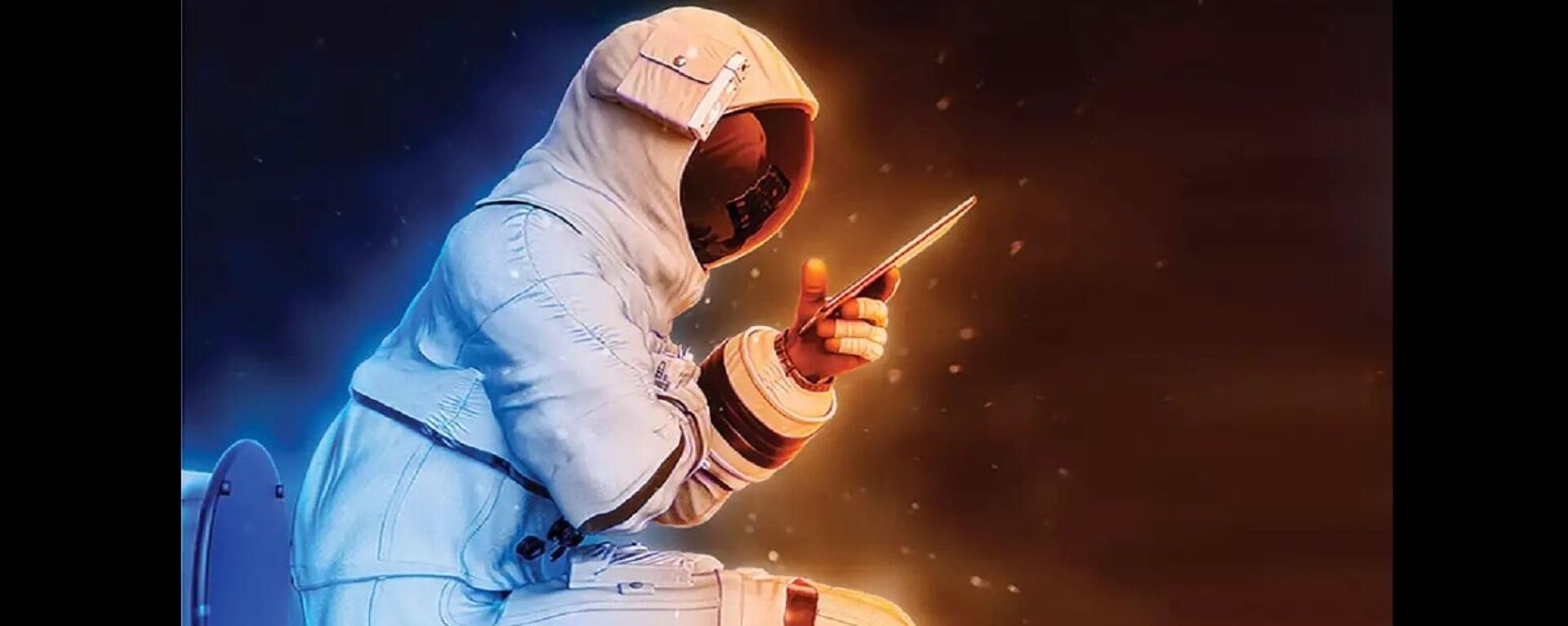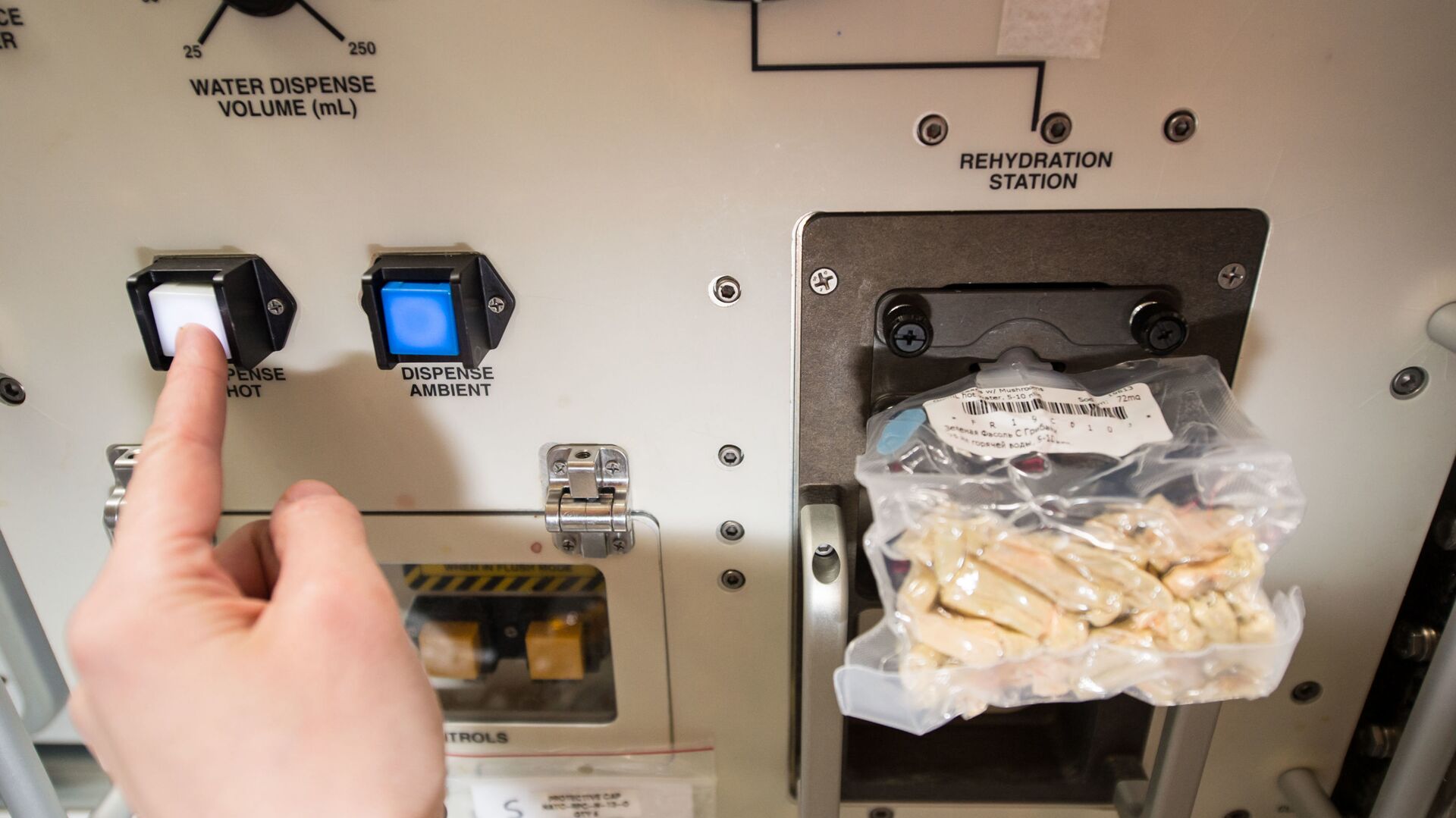https://sputnikglobe.com/20220126/you-can-get-1-million-from-nasa-for-solving-space-feeding-conundrum-1092521370.html
You Can Get $1 Million From NASA for Solving Space Feeding Conundrum
You Can Get $1 Million From NASA for Solving Space Feeding Conundrum
Sputnik International
NASA has announced a $1million prize purse for anyone who can come up with viable solutions to the challenging issue of feeding astronauts nutritious meals in space during many-year-long missions.
2022-01-26T07:11+0000
2022-01-26T07:11+0000
2022-01-26T07:11+0000
nasa
astronaut
canadian space agency
international space station
https://cdn1.img.sputnikglobe.com/img/07e5/04/0c/1082603475_0:159:3076:1889_1920x0_80_0_0_770e534371f573cf640f16f2c257b913.jpg
The National Aeronautics and Space Administration (NASA), in collaboration with the Canadian Space Agency, has announced a million-dollar prize purse for anyone who can come up with viable solutions to the challenging issue of feeding astronauts nutritious meals in space during many-year-long missions.An ambitious multi-year mission to Mars such as those mulled by the agency would meant that pre-packaged food would fall short of meeting all the needs for maintaining astronauts’ health.Participants of what has been dubbed the Deep Space Food Challenge are expected to present their innovative ideas on food production technologies and systems that would not only be palatable, sustainable and require minimum resources, but would also churn out as little waste as possible.Underscoring the importance of drumming up solutions that would mark a fundamental step towards both lunar sustainability and Mars exploration, NASA added:“As part of this, NASA and the Canadian Space Agency (CSA) are focused on how to furnish crew members with a viable food system for all long duration planetary missions.”Last October, Phase 1 of the competition saw 18 teams awarded a total of $450,000 for their concepts based on the food they envisioned producing. Proposed designs ranged from technologies to produce ready-to-eat foods, such as bread, and dehydrated powders to be potentially processed into food products to growing plants and fungi. On an even more ambitious level, suggestions were made for engineered food, such as cultured meat cells, to be grown or produced by the crew themselves.During the now-announced Phase 2 of the competition, NASA has urged both new and existing teams to enter the fray.At this stage, teams entering the competition are called upon to design, build, and demonstrate prototypes of food production technologies that could potentially be integrated into a complete food system for a three-year mission. This would address issues such as production, processing, storing, preparing and delivering food to the crew, as well as disposal of waste. Some proposals integrate plant growth systems, manufactured food products, and ready-to-eat solutions, ultimately presenting future deep space missions with a variety of options for daily nutrition.Jim Reuter, associate administrator for NASA's Space Technology Mission Directorate at the agency's headquarters in Washington, weighed in on the difficulty of feeding astronauts over long periods within the constraints of space travel, saying:In a step away from the interstellar aspect of the challenge, NASA added that solutions presented as part of the competition could be used to support food systems in harsh environments in the arctic region.
https://sputnikglobe.com/20220120/per-recycling-ad-astra-nasa-seeks-new-ideas-about-managing-fecal-waste-in-space-1092397562.html
international space station
Sputnik International
feedback@sputniknews.com
+74956456601
MIA „Rossiya Segodnya“
2022
Sputnik International
feedback@sputniknews.com
+74956456601
MIA „Rossiya Segodnya“
News
en_EN
Sputnik International
feedback@sputniknews.com
+74956456601
MIA „Rossiya Segodnya“
Sputnik International
feedback@sputniknews.com
+74956456601
MIA „Rossiya Segodnya“
nasa mars missions
You Can Get $1 Million From NASA for Solving Space Feeding Conundrum
NASA has long been facing the challenge of feeding astronauts during multiyear space expeditions, such as future missions to Mars, as pre-packaged food loses its nutritional value over time.
The National Aeronautics and Space Administration (NASA), in collaboration with the Canadian Space Agency,
has announced a million-dollar prize purse for anyone who can come up with viable solutions to the challenging issue of feeding astronauts nutritious meals in space during many-year-long missions.
An ambitious multi-year
mission to Mars such as those mulled by the agency would meant that pre-packaged food would fall short of meeting all the needs for maintaining astronauts’ health.
Participants of what has been dubbed the Deep Space Food Challenge are expected to present their innovative ideas on food production technologies and systems that would not only be palatable, sustainable and require minimum resources, but would also churn out as little waste as possible.
“Early lunar missions will begin by using prepackaged food systems similar to those in use on the International Space Station (ISS) today, but extending the duration of lunar missions requires reducing resupply dependency on Earth until a food system is ready to support a mission to Mars,” says the announcement on the website.
Underscoring the importance of drumming up solutions that would mark a fundamental step towards both lunar sustainability and Mars exploration, NASA added:
“As part of this, NASA and the Canadian Space Agency (CSA) are focused on how to furnish crew members with a viable food system for all long duration planetary missions.”
Last October,
Phase 1 of the competition saw 18 teams
awarded a total of $450,000 for their concepts based on the food they envisioned producing. Proposed designs ranged from technologies to produce ready-to-eat foods,
such as bread, and dehydrated powders to be potentially processed into food products to growing plants and fungi.
On an even more ambitious level, suggestions were made for engineered food, such as cultured meat cells, to be grown or produced by the crew themselves.
During the now-announced Phase 2 of the competition, NASA has urged both new and existing teams to enter the fray.
At this stage, teams entering the competition are called upon to design, build, and demonstrate prototypes of food production technologies that could potentially be integrated into a complete food system for a three-year mission.
This would address issues such as production, processing, storing, preparing and delivering food to the crew, as well as disposal of waste. Some proposals integrate plant growth systems, manufactured food products, and ready-to-eat solutions, ultimately presenting future deep space missions with a variety of options for daily nutrition.

20 January 2022, 13:40 GMT
Jim Reuter, associate administrator for NASA's Space Technology Mission Directorate at the agency's headquarters in Washington, weighed in on the difficulty of feeding astronauts over long periods within the constraints of space travel, saying:
"Pushing the boundaries of food technology will keep future explorers healthy and could even help feed people here at home."
In a step away from the interstellar aspect of the challenge,
NASA added that solutions presented as part of the competition could be used to support food systems in harsh environments in the arctic region.


